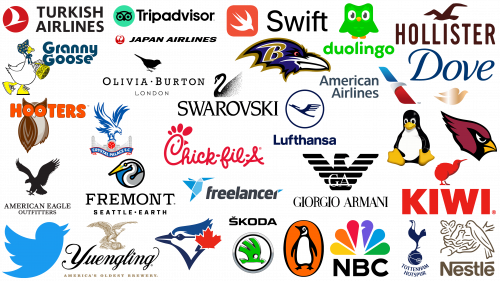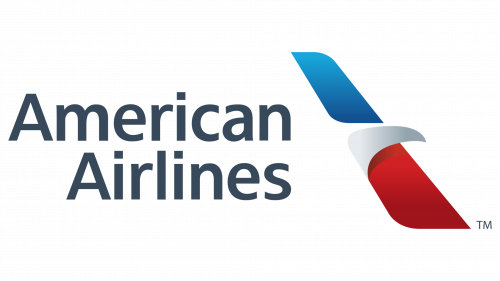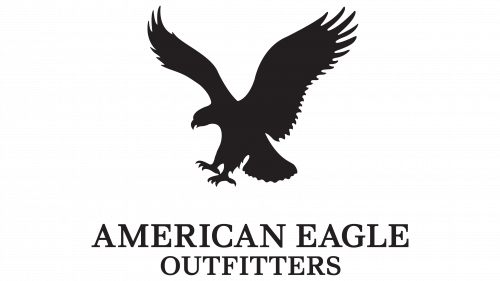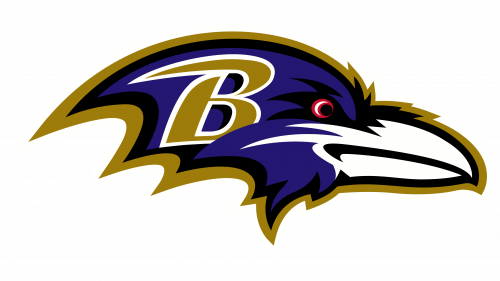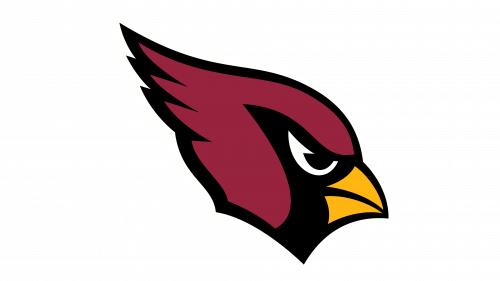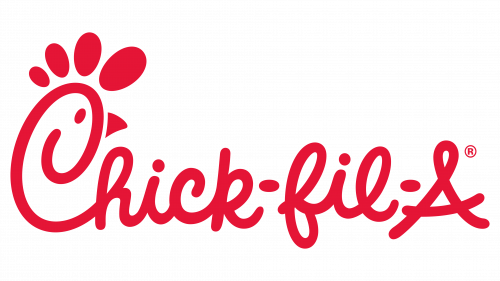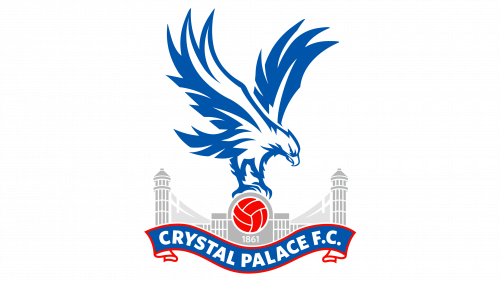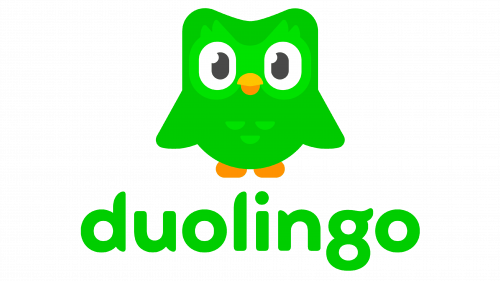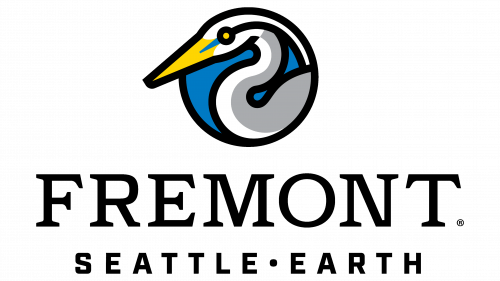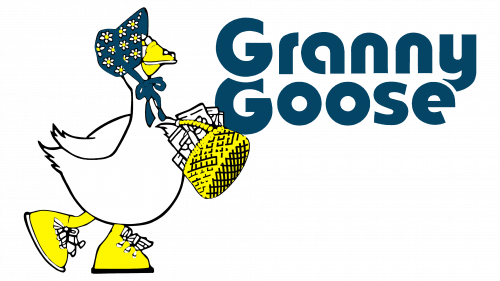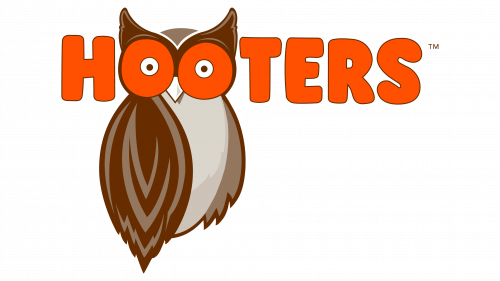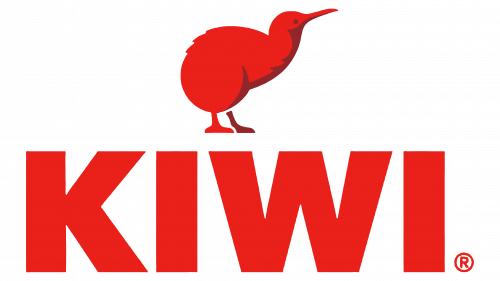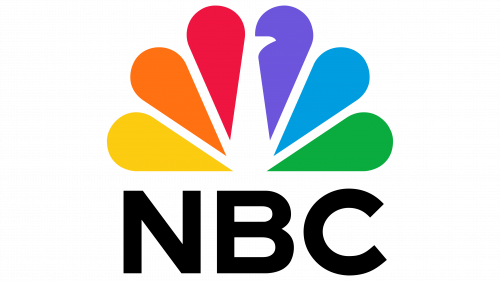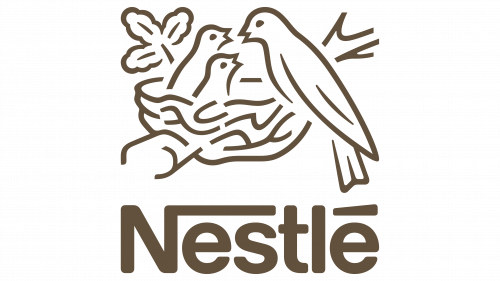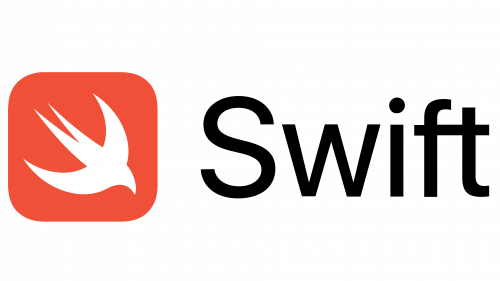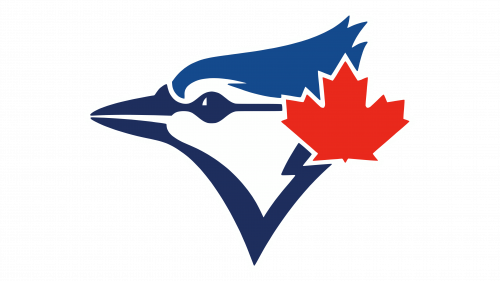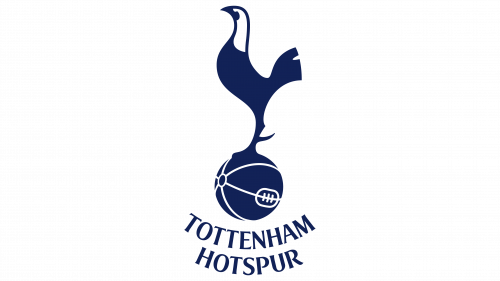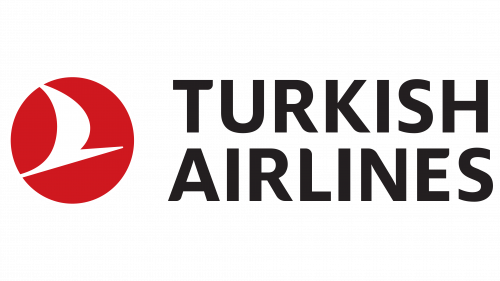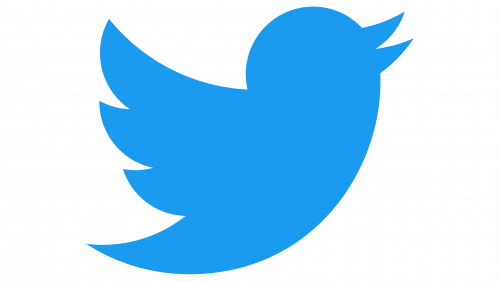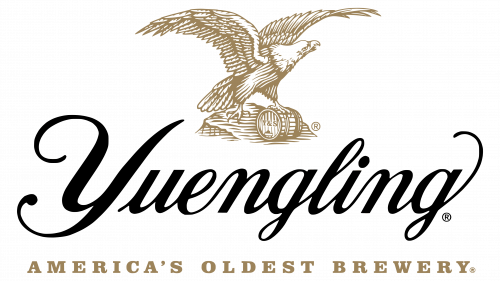Bird-themed logos have become part of the corporate identity of many businesses. Many will immediately recognize the Penguin Books logo or even the Nestle logo. Behind these familiar names lies a rich tapestry of bird-themed logos adorning various businesses around the world.
The decision to choose a bird in a logo design is rarely haphazard. This choice is driven by the deep meanings and emotions that these creatures evoke. It is akin to using other animals in the corporate identity. For example, dynamic images of a galloping horse easily convey agility and grace. Similarly, bold images of lions and tigers symbolize fierce determination and unbridled strength.
The scope of bird symbols is vast and varied. Small birds, such as finches or canaries, usually evoke feelings of warmth, tenderness, and empathy. On the other hand, the more majestic members of the bird kingdom, such as eagles or falcons, are synonymous with ambition, drive, and a forward-thinking view of the world. However, all bird motifs share one thing in common: the universal theme of freedom and aesthetic splendor.
There are many intriguing bird logos worn by famous companies around the world. Each one reflects the essence of the brand in its own way while utilizing the symbolism inherent in the chosen bird. It’s a fascinating interplay of art, emotion, and corporate identity.
The most famous bird logos
Incorporating an animal symbol into a brand’s visual emblem provides an opportunity to give it a deeper meaning. Given humanity’s innate tendency to associate certain characteristics with various animals, brands can strategically use these symbols to emphasize their ethos, mission, or brand persona. Birds, with their rich symbolism, are a particularly attractive choice for companies looking to convey emotion and meaning.
Utilizing all the nuances of bird imagery in a logo design is no easy task. The final interpretation is influenced by many elements: the chosen bird species, its pose, and its location in the design. The difference in perception is obvious when comparing an eagle depicted in flight with outstretched talons and a pigeon resting gracefully in its shelter. The former may evoke perceptions of agility, dominance, and swift precision, while the latter radiates calmness, harmony, and serenity.
But choosing a bird based on its aesthetic appeal is only the tip of the iceberg. It is important to delve deeper into the symbolic layer that each bird carries. While peacocks can be consonant with themes of grandeur, luxury, and attraction, birds such as ravens or crows are often associated with mysticism, symbolizing knowledge or adaptability. Aligning the symbolism inherent in the bird with the brand narrative is paramount for authentic and effective resonance.
To gain a full understanding of the dynamics of the interplay between bird symbolism and brand perception, it is useful to consider some well-known bird logos that have stood the test of time. These emblems demonstrate the power of effective design and highlight how the subtle details of bird imagery can align with a company’s ethos, providing an indelible imprint on its audience. Whether it’s the proud posture of a phoenix or the delicate flutter of a hummingbird, the logos go beyond simple design to create stories that evoke both emotional and cognitive responses.
American Airlines
Bird symbolism has become popular in corporate branding, especially among airlines. American Airlines, a dominant airline both in the United States and on the world stage, is a case in point. Its logo subtly features elements of the bird, albeit in a more abstract form than other carriers.
The understated elegance of the design lies in its versatility. The soft beak-like curve conjures up the image of the eagle, an emblematic bird deeply connected to American identity and values, symbolizing freedom and the urge to soar. The association with the eagle is not just national pride; it is a promise of broad horizons and limitless possibilities – essential attributes of air travel.
The understated aesthetics of the logo offer another interpretation. Its streamlined shape can be compared to an airplane in mid-flight. This dual representation enhances its communicative power, allowing the logo to harmonize with the essence of the airline industry while retaining its distinctly American character.
American Eagle
A well-known name in fashion and retail, American Eagle Outfitters, often referred to as “American Eagle,” is a testament to time-tested branding and youthful appeal. Founded in 1977, this American retailer chose the soaring eagle as its symbol.
The eagle in many cultures, especially in the US context, symbolizes freedom, strength, and vision. For American Eagle Outfitters, the image of this majestic bird in mid-flight serves not only as an expression of national pride but also as an allegory of the aspirations and limitless potential of young people, the brand’s core audience.
The choice of a brand logo aimed primarily at a youth audience, particularly students entering various phases of their lives, is of strategic importance. The visual image of the eagle provides a subtle yet effective link to the brand name, reinforcing its memorability.
Baltimore Ravens
The Baltimore Ravens, an NFL team based in Baltimore, has distinguished itself through sportsmanship and unique branding. The team’s emblem stands out in the league thanks to its vibrant combination of gold and purple hues. This color palette was not chosen by chance; it reflects the team’s ebullient energy and bold spirit that it strives to embody on the field.
Founded in 1996, the team quite democratically involved its fans in the choice of name and logo. At the initiative of the organization, a vote was held in which more than 33,000 fans participated. In the end, the name “Ravens” was chosen, which is multifacetedly associated with the city of Baltimore.
The choice of “Ravens” is not just a decorative decision. It symbolizes Edgar Allan Poe, the famous author of the iconic poem “The Raven.” The emblem and team name are a tribute to the city’s rich literary history while at the same time being dynamic and easily recognizable.
The Baltimore Ravens successfully combines elements of literature, history, and sports to embody the essence of Baltimore’s multifaceted identity.
Cardinals
Founded as a professional soccer team, the Arizona Cardinals have long been associated with a bird-shaped emblem that sets them apart in the arena of American soccer. The presence of this emblem in the league is very visible, with its bright red hue and striking design making it easily recognizable among sports fans.
The choice of the cardinal as the team’s symbol is quite appropriate and strategic. This bird, known for its bright red plumage, is visually appealing and symbolizes vigor and energy. The bold lines and dynamic posture of the emblem suggest movement and aggression, which is very important for a sport as competitive as soccer.
Although the cardinal motif has been used in the branding of various American sports organizations, its use in the Arizona Cardinals logo retains its uniqueness. The design captures the essence of the bird while harmonizing with the spirit and character of the team.
Chick-Fil-A
In the realm of fast food companies, Chick-fil-A stands out not only for its original offerings but also for its ingenious branding. Founded in 1946, the brand carved out a niche for itself by specializing primarily in chicken sandwiches. This culinary specialty influenced the name and memorable logo of the establishment.
A testament to creative branding, the Chick-fil-A logo unexpectedly incorporates a poultry element. Departing from the traditional way of adding an illustration of a bird, the brand brilliantly transformed the letter “C” into a silhouette of a chicken. This clever design adds an element of surprise to the logo, making it instantly recognizable and reinforcing the brand’s chicken-centric ethos.
The modern and playful design of the logo resonates with the audience. Chick-fil-A emphasizes its core offering and demonstrates a commitment to creativity and originality in the fast food sector.
Crystal Palace
In the competitive arena of Premier League emblems, the Crystal Palace logo is undoubtedly a memorable one. The team from South London proudly displays on its emblem a dynamic eagle gracefully holding a soccer ball in its talons. This avian motif represents the team’s nickname, reinforcing its identity and ethos.
The unconventional nature of the Crystal Palace emblem sets it apart from many other Premier League emblems. In addition to a pronounced eagle, the emblem is intricately woven with the image of a large palace and a number of other characteristic details that give depth and richness to the overall image.
This multi-faceted emblem reflects the history and location of the team, as well as the sophistication and attention to detail that is required to create and maintain a soccer club of this caliber.
Dove
One of the iconic symbols in the beauty industry is the Dove emblem. Dove, a company with a global presence and known for its poignant marketing stories, chose the dove bird for its emblem, which is symbolic and meaningful.
The image of a dove, especially in a golden hue, evokes feelings of tenderness, purity, and grace. These characteristics are closely intertwined with the brand’s core values and its commitment to true beauty and self-care. In addition, the dove is a universally recognized symbol of peace, and in the context of beauty, it subtly hints at inner peace and self-acceptance.
The image of this bird is complemented by the exquisite cursive graphics used for the Dove brand name. The choice of this typeface blends seamlessly with the brand’s premium and sophisticated image. It also reflects the brand’s commitment to elegance and its desire to enhance the self-esteem of people around the world.
Every facet of the Dove logo, from the golden dove to the elegant word mark, embodies the brand’s ethos.
Duolingo
Launched in 2011, Duolingo has since made its mark in the language learning industry. Its core mission is to help people around the world in their quest to master new languages and enrich their vocabularies. While the company does not use the owl mascot in every aspect of its advertising strategy, there is no doubt that for many, this mascot has come to epitomize the brand.
The owl has historically been a symbol of wisdom and deep knowledge. The combination of this symbol with a platform like Duolingo, aimed at spreading knowledge, is quite harmonious. The symbolism of the owl echoes the idea of creating an environment where language acquisition is not just a rigorous academic exercise but an educational journey.
The eye-catching green hue that adorns the brand’s visuals is not just eye-catching. It gives a sense of liveliness and enthusiasm, suggesting that learning can be not only fun but also educational. By using this lively tone in its branding, Duolingo emphasizes its commitment to democratizing language learning, making it accessible and enjoyable for people from all walks of life.
Freelancer
Freelancing is often associated with independence, self-control, and inventive abilities. A company dedicated to helping freelancers find employment naturally gravitates towards the bird as a personification of these ideals. Freelancer’s emblem stands out not only because of the bird’s image but also because of the unique way it is presented.
The company’s emblem, introduced in 2009 and masterfully rendered by Edward Sutrisno, differs from traditional bird imagery. Instead, it draws on the art of paper folding to represent an origami bird.
The origami bird, with its intricate folds and sharp corners, epitomizes the meticulous work and attention to detail that freelancers bring to their projects. Just as a single piece of paper can turn into many shapes in the hands of an origami master, freelancers have versatility and the ability to adapt to different tasks.
Fremont
Brands often look for symbols that resonate with their background, ethos, and target audience. In Seattle, a prime example of this strategic branding is the beer brand Fremont, whose emblem is a bird – the crane.
Known for its grace and stateliness, the crane can be seen as a nod to Seattle’s active urban development and harmonious coexistence with nature. It serves as a reminder of the brand’s humble beginnings in this bustling city while also pointing to its forward-looking vision.
The Fremont tap stands in marked contrast to older beer brand symbols, such as Yuengling, and creates a sense of modernity. Its design features bold lines and bright hues that attract the attention of viewers, especially young ones. This logo strategy shows Fremont’s adaptation to changing market trends while at the same time maintaining its roots.
Giorgio Armani
Giorgio Armani’s emblem, designed in the form of an abstraction, draws the viewer’s attention without the use of an easily recognizable bird figure. Even in the minimalist design, the image of an eagle is unmistakable.
The eagle with gracefully spread wings subtly conveys the notion of spaciousness and limitless possibilities. This symbolic image is a perfect fit for a brand that has always stood for innovation and overcoming boundaries in fashion. The judicious use of the golden hue in the logo emphasizes the brand’s association with luxury and the highest quality.
In luxury branding, where symbols speak louder than words, Giorgio Armani’s decision to use a minimalist yet expressive bird logo is a masterclass in understated elegance.
Granny Goose
Created in 1946 under the Snak King brand, Granny Goose has become one of the most popular snack brands in the United States. As the name and logo suggest, the brand’s identity is designed to evoke feelings of warmth, coziness, and nostalgia. The image of a “grandmotherly” goose in a bonnet brings to mind thoughts of tender grandmotherly care and domestic kindness.
The quirky goose outfit strategically positions the brand as memorable and appealing to consumers, especially young ones. Such a mascot not only reinforces the brand’s promise of quality and trust but also introduces an element of fun and relatability. The combination of family coziness with playful imagery ensures that Granny Goose will remain not only a choice but also an enjoyable experience for snack lovers of all ages.
Hollister
The fashion world is rife with iconic symbols, and among them is the unmistakable Hollister bird emblem. Debuting in 2000, Hollister, a subsidiary of Abercrombie & Fitch, has since carved out a niche for itself in the clothing retail sector. The heart of the brand is a bird soaring through the sky, symbolizing the freedom, innovation, and limitless potential the brand strives for.
This silhouetted design, devoid of complex details, serves several purposes at once. It embodies the simplicity and versatility that modern brands strive for.
The silhouette of a bird in flight conveys the idea of transcendence, encouraging the wearer to rise above the ordinary and embrace their unique individuality. This design philosophy is in perfect alignment with Hollister’s target demographic – young people who are constantly looking for ways to express themselves. Hollister’s timeless and adaptable logo speaks to its forward-thinking nature.
Hooters
Featuring an owl emblem, the Hooters brand is one of the most recognizable logos in the United States. This emblem carries a double meaning: on the one hand, it symbolizes the owl, a creature representing wisdom and vigilance, and on the other hand, it playfully alludes to a colloquial term referring to female anatomy.
The logo design is intentionally bright: the bold colors and the owl’s pronounced eyes are meant to attract attention. These exaggerated features of the bird may evoke a sense of surprise or amazement, reflecting the reaction that may arise in those who encounter the brand’s unique atmosphere, characterized in particular by the attire of the service staff.
Although unconventional, Hooters’ choice of the owl is in line with the brand’s desire to stand out in the hospitality sector.
Japan Airways
Airlines often use avian symbols in their branding, drawing parallels between the majesty of birds in flight and the wonders of air travel. Japan Airways has chosen the crane as its emblem, and it is an apt choice given the bird’s deep cultural resonance in Japan. In Japanese tradition, the crane is revered as a harbinger of longevity and good fortune.
The choice of red as the emblem of Japan Airways is not unreasonable. The color red is deeply rooted in Japanese cultural and aesthetic perception. It is often associated with joy, enthusiasm, and deep passion. By using this color, Japan Airways subtly evokes these feelings in an effort to create positive associations with its brand.
Kiwi
Established in 1906, the Kiwi brand is a testament to its enduring heritage and innovative branding. In its more than century-long history, this North American company has carved out a strong niche in shoe care, distributing its products in 180 countries around the world.
Choosing the image of a distinctive bird as the logo was no coincidence. The inclusion of the unusual bird symbol was a deliberate attempt to emphasize the uniqueness of the brand and its penchant for unconventionality. Such a logo differentiates Kiwi from its competitors and emphasizes its unique position in the market.
In a global marketplace where brands struggle for recognition, Kiwi stands tall, supported by its iconic bird logo.
Linux
In the computer industry, few bird-themed emblems resonate as much as the Linux penguin. This cute mascot traces its origins back to company founder Linus Torvalds.
The penguin is not just a graphic image; it embodies the brand’s special values. Its cheerful disposition gives the Linux brand lightness and accessibility. The design choice was far from arbitrary; it was a strategic move to make the tech brand more understandable to the general public.
The Linux Penguin is more than just a logo; it serves as a bridge bridging the gap between a complex technology platform and its diverse user base. The platform is both robust in its capabilities and welcoming in its nature.
Penguin epitomizes Linux’s mission to present cutting-edge technology in a user-friendly way.
Lufthansa
Lufthansa is a leading German airline known around the world, recognized by many by the distinctive blue logo that adorns its fleet. This branding strategy is not just aesthetic; it carries a deep connotation. The rich blue color, often associated with reliability and depth, is a strategic choice that conveys the airline’s commitment to reliability and safety in every journey.
Next to the name “Lufthansa,” the logo depicts a crane. The crane is honored as a symbol in various cultures. Its graceful posture and flight are often synonymous with grace and longevity. In many cultures, the crane is a harbinger of good fortune, prosperity, and continued growth. Lufthansa’s choice of the crane is not just a decoration. Such nuances in Lufthansa’s branding demonstrate a thoughtful combination of cultural reverence and corporate ambition.
NBC
Since its inception in 1943, NBC has undergone a significant evolution in its approach to branding. This evolution has been characterized by intense experimentation and iteration in the visual representation of the brand. Several design options were considered, each telling its own unique story about the network’s vision and direction. It wasn’t until the colorful peacock emblem was chosen that a true brand identity was created.
The inclusion of multiple colors in the peacock emblem was not just an aesthetic choice but carried a symbolic message. NBC’s multi-color design was familiar from the groundbreaking era of color television, highlighting its revolutionary impact on viewership. The colors symbolized the broadcaster’s pioneering spirit and its role in ushering in a new television era.
The colors of the emblem also reflect the diversity of NBC’s programming. Each hue – from compelling dramas and in-depth documentaries to entertaining comedies and reality shows – reflects the versatility and breadth of the content of the channel’s programs.
Nestle
Among brands that use bird symbolism, Nestle is an iconic example. Its logo depicts not one but three birds – a mother figure and two of her offspring. This design has many layers of meaning, from emotional connotations to historical context.
The image of the mother bird and her chicks is a powerful symbol of nurturing, caring, and family bonding. It is intended to convey the values of compassion and responsibility, traits that are commonly associated with motherhood. This design makes it easily recognizable and emotionally resonant to a wide audience, emphasizing the brand’s focus on nourishing and supportive products.
The bird image is not just a creative choice but a deep brand story. The original concept was borrowed from the family crest of Henri Nestlé, the company’s founder. The logo has undergone several changes to conform to modern design aesthetics while retaining the essence of its historical origins. The evolution has made the logo more recognizable and memorable, keeping it relevant and respectful of the past.
Nestlé’s three-bird logo effectively combines emotional resonance and historical richness. It is a carefully crafted narrative condensed into a visual form that has evolved over time in line with tradition and design trends.
Olivia Burton
Bird motifs, symbolizing elegance and freedom, are reflected in the logos of many prestigious jewelry brands, including Olivia Burton. This jewelry company, based in London, prides itself on offering products that are not only affordable but also accentuated feminine.
The Olivia Burton emblem is emphasized by a small bird that represents whimsy, playfulness, and whimsy. Such attributes are just right for a brand aimed at a young and energetic audience. It gives the brand a fresh and modern feel and distinguishes it from many traditional jewelry brands, some of which seem somewhat boring.
The symbol chosen by Olivia Burton is a profound reflection of her position in the jewelry sector: progressive youthful, taking into account the changing tastes of her customers.
Penguin Books
The Penguin Books emblem, depicting a good-natured puffin, is among the globally recognized bird-themed logos. Created in 1935 by Edward Young, the mascot was intended to convey a sense of freshness and accessibility, reflecting the brand’s desire to connect with a wide audience.
Although minor changes have been made to the design, the core element – the bird motif – has remained a constant pillar of the brand’s identity.
The bright orange background, which depicts a tit, serves a dual purpose. It attracts the observer’s eye, ensuring instant brand recall. In addition to visual appeal, this shade symbolizes the brand’s commitment to originality and ingenuity. Despite being just a backdrop, the shade is closely intertwined with the company’s history, emphasizing its commitment to creating original literary content.
Skoda
Skoda, founded in 1925, stands out in the automotive industry not only for its cars but also for its distinctive emblem. Over the decades, the company has become a world powerhouse with an emblem that resonates with many.
The centerpiece of the Skoda emblem is an intriguing image of a bird with an arrow accompanied by wings. The choice of bird imagery is unique in an industry where many gravitate towards more abstract or mechanical symbols.
Equally notable is the use of a shade of green in the emblem. While the automotive industry mostly opts for neutral or metallic colors, Skoda’s choice deviates from the norm. This shade of green is not just a color; it embodies Skoda’s ethos, perhaps hinting at innovation, growth, and a sustainable approach to car manufacturing.
Swarovski
The symbolic use of birds in logos has been embraced by many brands, and one prominent example is Swarovski. Their emblem, depicting an exquisitely crafted swan, appears to be skillfully assembled from the shimmering crystals for which the company is famous. Swarovski has carved a niche for itself in the luxury market, offering a wide range of glass crystal jewelry, ornaments, and exclusive home décor items.
The Swarovski logo is based on the image of refinement, sophistication, and unearthly beauty. The combination of the swan illustration in the logo and the exquisite serif font only emphasizes its classic and timeless charm.
Swift
Swift’s logo certainly makes its mark, especially on the coding community. Swift’s emblem, depicting a bird in motion, is an artistic choice and a profound symbol of the brand’s ethos.
Swift, born of Apple, is more than just a programming language. Its essence is efficiency, speed, and user-friendliness. This is reflected in the bird’s design, which conveys a sense of mobility and fluidity. The choice of colors – white and orange – is no accident. White signifies purity, suggesting that Swift’s code is clean and uncluttered. Orange often symbolizes enthusiasm, creativity, and determination, which fits perfectly with the innovative spirit that Swift embodies.
The minimalist design of the wordmark next to the bird icon demonstrates the brand’s dedication to simplicity. Every element of the Swift logo, from the design to the color palette, is indicative of the language’s mission: to make coding more accessible, efficient, and innovative.
Toronto Blue Jays
The Toronto Blue Jays team, hailing from Toronto, Canada, is proud to represent their city in Major League Baseball. A prominent member of the MLB community, this team is synonymous with a distinctly avian motif that evokes a sense of pride in their city. The name “Blue Jays” was inspired by the bird itself. This choice also harmonizes with the predominant color palette associated with Toronto’s professional sports organizations.
The Blue Jay team emblem depicted on the symbol is contemporary in style and eye-catching with its bright hues and pronounced design elements. While this bird may not evoke the same fury as other feathered mascots in the sports realm, its image certainly conveys determination and drive through its lively disposition and vibrant colors. The emblem is a daily reminder of the city’s vibrant culture and the team’s commitment to represent it at the highest level in the sporting arena.
Tottenham Hotspur
Since its foundation in 1882, the Tottenham Hotspur soccer club from the United Kingdom has retained a unique and memorable emblem, which depicts a rooster standing on a soccer ball. This particular emblem has been a constant element of the team’s style since 1921.
The choice of the rooster as the emblem has historical significance. The team was named after Harry Hotspur, who was nicknamed “Hotspur” for his bravery. The nickname “Hotspur” refers to the fighting cockerels with spurs on their feet. The image of the bird on the emblem serves as an indication of the origins of the club and its namesake, providing both aesthetic and symbolic representation.
The soccer ball under the rooster’s feet further emphasizes the sporting nature of the club’s activities. The logo embodies the rich history, values of the team, and the sport it represents in a unified and lasting image.
Tripadvisor
Founded at the dawn of the new millennium in 2000, Tripadvisor has become a beacon for people eager to travel and discover the wonders of the globe. This American company specializing in digital travel is constantly paving the way for travelers, guiding them through undiscovered places and famous landmarks.
Tripadvisor’s brand identity is based on an emblematic figure resembling an owl, elegantly captured in the company’s logo. This avian image is not just a design choice; it encapsulates deep symbolism. Historically, the owl is synonymous with insight, enlightenment, and deep knowledge. By using this avian symbol, Tripadvisor subtly conveys its desire to provide insightful and informed travel recommendations.
The quirky hue of the logo allows Tripadvisor to be presented not only as a repository of advice for travelers but also as a friendly guide that is accessible and understandable. It bridges the gap by appealing to experienced travelers and newcomers alike, presenting a combination of competence and accessibility.
Turkish Airlines
As Turkey’s leading airline, Turkish Airlines may not be as well known in some parts of the world, but its reach is extensive. Providing services to more than 315 destinations worldwide, it ranks well among the world’s major mainline aviation players.
Turkish Airlines demonstrates the power of simplicity. The company’s emblem – a graceful silhouette of a bird – is an example of this approach. Although it is difficult to identify a specific type of bird, the symbol easily conveys the notions of freedom and boundless sky. The choice in favor of a minimalist design is not only due to aesthetic appeal but also to the airline’s desire to transcend boundaries and unite different destinations. This emblem conveys the promise of exploring, traveling distances, and experiencing different cultures under the Turkish Airlines flag.
In today’s digital age, Twitter’s bird logo is a striking symbol that represents the vibrancy, dynamism, and spontaneity of online communication. With its simplicity and elegance, the logo is designed for a generation that has embraced the digital environment.
The bird image, rendered in an elegant and modern design, embodies Twitter’s mission to create instant connections and dialogues. It echoes the platform’s ethos, where thoughts, like a bird’s chirp, are conveyed in brief and fleeting messages. The choice of the color blue for the bird is thoughtful and strategic. The versatile color blue evokes feelings of reliability, calmness, and confidence. Such emotions blend seamlessly with the brand’s desire to become a trusted platform for millions of people around the world.
The bird symbol emphasizes the speed and smoothness of the platform, where messages fly swiftly, like birds fluttering through the sky. This symbolism accurately captures the essence of Twitter: a space where voices from different corners converge, echoing, resonating, and uniting into a vast digital symphony.
Yuengling
Brands often use symbolism in their logos to convey a deep meaning that resonates with their core values. Yuengling’s decision to incorporate a bald eagle into its logo is particularly noteworthy.
The bald eagle, symbolizing the American spirit and freedom, highlights Yuengling’s rich heritage as the nation’s brewing pioneer. It not only embodies national values but also symbolizes the enduring legacy of this iconic brand. The connection between the symbol and the brand’s history creates a multi-generational representation of tradition, experience, and passion for brewing.
Visually, the logo creates a sense of timelessness. Its classic, perhaps even retro design reflects the brewery’s journey in the annals of American brewing history. The design of the logo sets it apart from many modern logos, making it distinctive and memorable.
Exploring brands with bird logos
Recently, bird-themed logos have become increasingly common in corporate branding. This proliferation can be explained by the fact that birds have deep roots in human psychology. Birds often represent freedom, soaring aspirations, and limitless potential, making them a suitable symbol for companies seeking to create an image of ambition and expansiveness.
The specific species of bird chosen for an emblem, the orientation of its design, and the accompanying color scheme can greatly influence public perception. For example, a falcon may symbolize agility and precision, while a dove may symbolize peace and harmony. The subtleties of the design – from the pose of the bird to its flight and the color palette chosen – play a critical role in shaping the brand image. This adaptability and variety of interpretations emphasize the uniqueness of bird symbolism in branding. Their ability to embody different messages and emotions sets them apart from others, making them a preferred choice for many companies.
